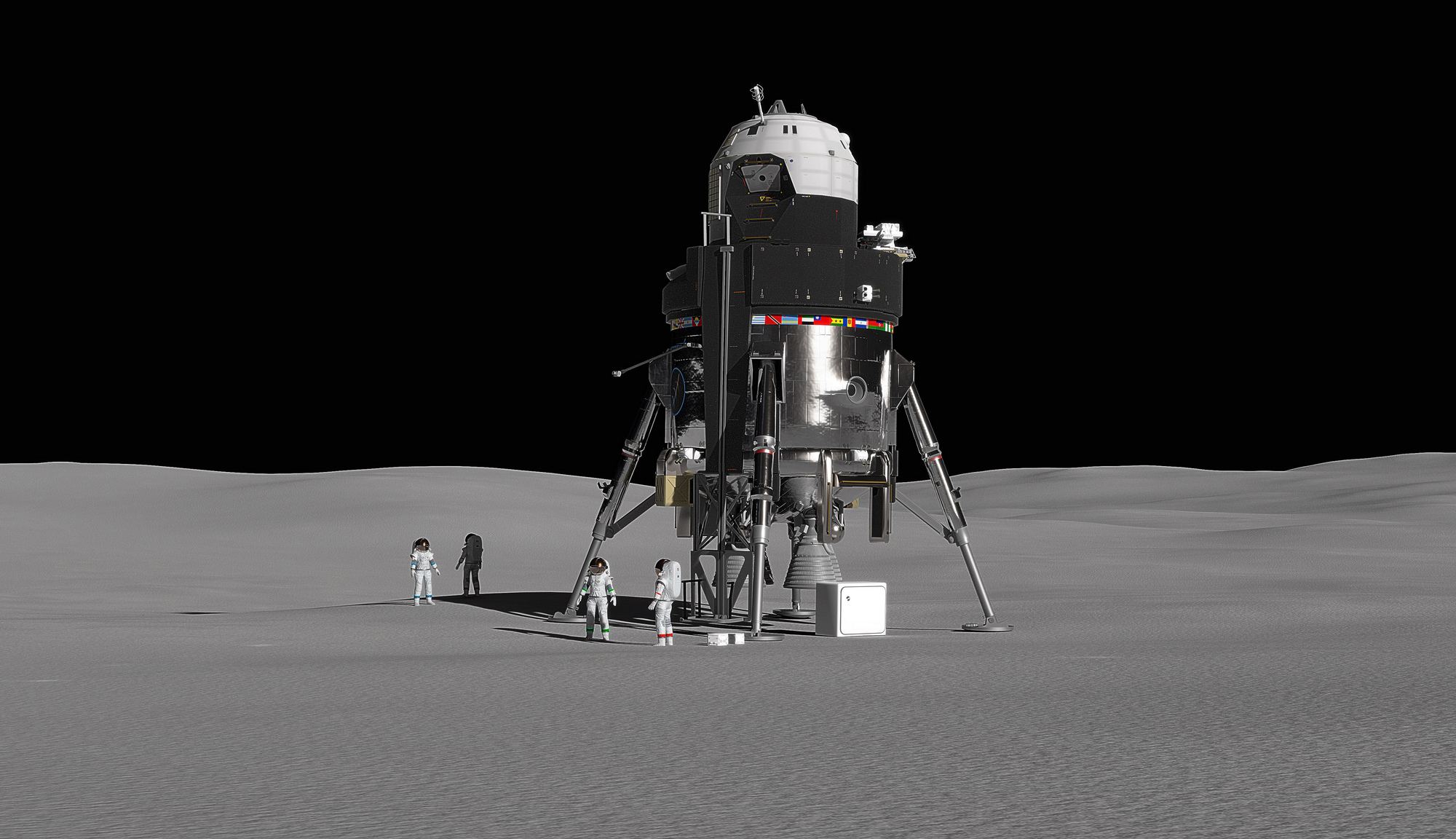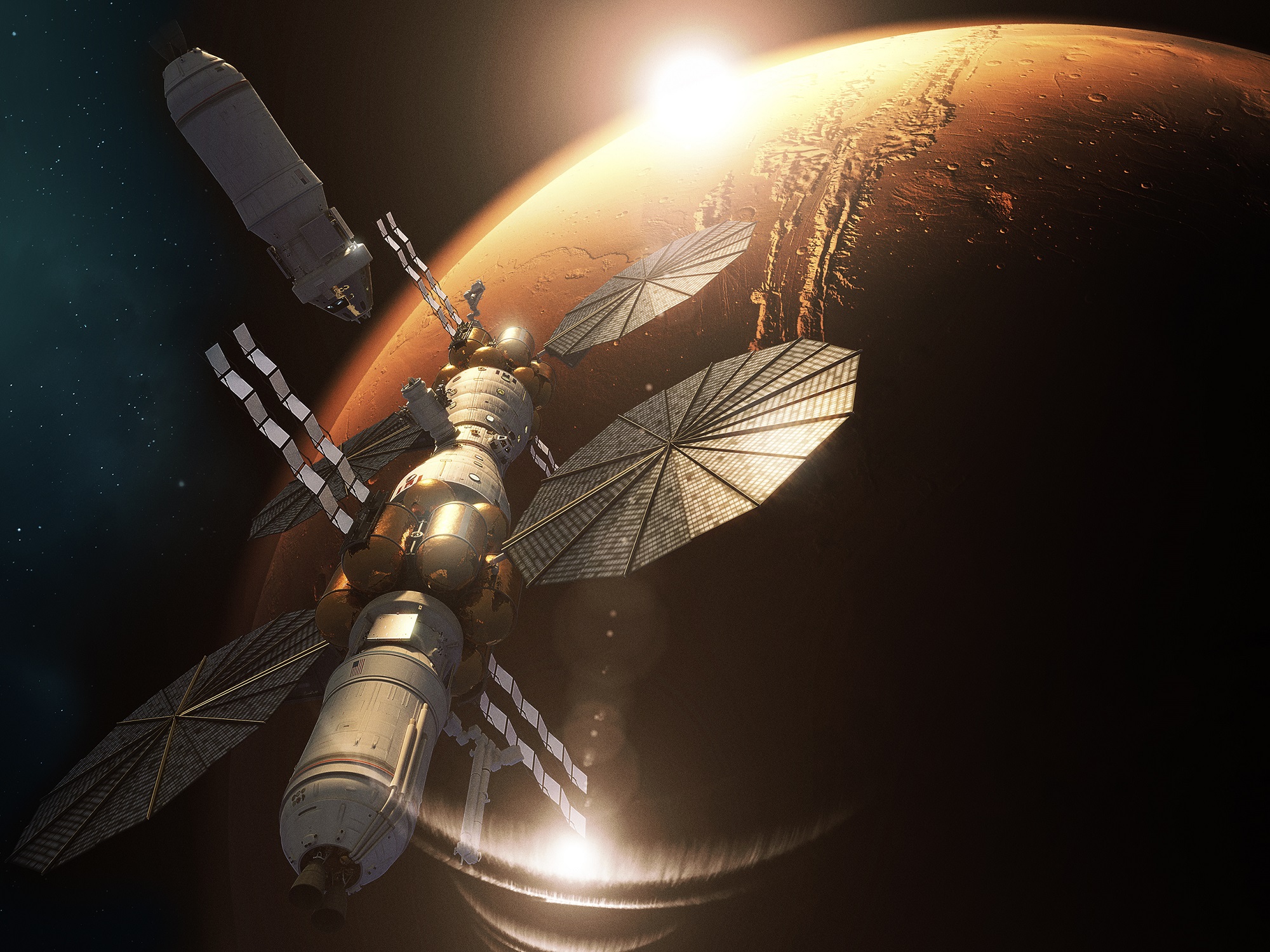Lockheed Martin reveals the details of the lunar landing module project
- Transfer

For the coming decades, NASA has ambitious plans to send astronauts to the moon and the first manned missions to Mars. To achieve these lofty goals, the agency invests in advanced technologies and contracts with major aerospace companies in order to create the necessary spacecraft and other mission components.
One of these components, which will allow astronauts to get to the lunar surface and back, should be the concept of a lunar reusable descent vehicle. The concept was presented in early October at the 69th International Astronavigational Congress in Bremen, where the latest achievements in space exploration were demonstrated to the space agency and industry experts.
The proposed descent vehicle has one stage and a reusable system, which includes many technologies and systems used in the Orion spacecraft . The landing gear will become an integral part of the lunar orbital gateway platform (formerly known as Deep Space Gateway) - the proposed international station that NASA plans to build in orbit around the moon.

The artist’s view of the lunar landing module connected to the lunar orbital platform-gateway.
This device will allow astronauts not only to carry out missions on the lunar surface, but also to fly to Mars as a result (after the construction and commissioning of Deep Space Transport ). And although the flight to Marsexpected no earlier than the 2030s, NASA plans to create a lunar platform in the next decade and send manned missions to the lunar surface by the end of the 2020s.
In its initial configuration, the descent module will be capable of a pulse of 5 km / s and will be able to deliver a team of four people to the surface of the Moon and a ton of cargo. He will also be able to work on the surface of the moon for up to two weeks before returning to the orbital station, and he will not need to be serviced and refilled on the surface.
Lisa Callahan, vice president and general manager of commercial civilian space projects at the Lockheed Martin Space division, in a recent press release wrote:
NASA has sent a request to the industry for innovative and new approaches to meeting America’s goal of returning people to the moon and organizing a viable and long-term presence there. This concept takes full advantage of the design of the orbital station and existing technologies in order to create a versatile and capable of many descent vehicles, which can be quickly and inexpensively built. This device can be used for the foundation of a base on the surface, for the delivery of scientific and commercial cargo, for conducting extraordinary explorations of the Moon.

The artist's presentation of the lunar landing module on the surface of the moon
Its ability to transport four crew members coincides with the capabilities of the Orion, and a one-ton carrying capacity will allow the crew to carry scientific equipment that can be left behind, along with an untight all-terrain vehicle. Due to the unique orbit of the lunar station, astronauts will have the opportunity of frequent access to various places of the moon.
This will allow many international, commercial and scientific enterprises to be carried out, fulfilling the goal of NASA for continuous study of the Moon. Tim Kichan - space exploration mission developer at Lockheed Martin Space - stated during the concept presentation :
The lunar orbital station is the key to the complete, frequent and quick re-use of this descent vehicle. Since he will not have to be punished by re-returning to the atmosphere of the Earth, one can fly it many times without significant and expensive repairs. This is the main advantage of the lunar station and a modular, flexible, reusable approach to the study of deep space.
In addition, the lunar platform and reusable descent module will help NASA to prepare for sending people to Mars. Using all the components and methods of the mission, NASA will gain the necessary experience, which will come in handy when setting up the Martian base camp [an orbital spacecraft to explore Mars / approx. perev.] and devices descent / ascent from Mars ( Mars Ascent / Descent Vehicle, MADV). To begin with, the size of the team of four people coincides with the current plans of NASA regarding the team for the development of Mars.

The artist's view of the Mars base camp in Mars orbit. The
two-week mission duration of the landing module also coincides with the MADV work plan. Moreover, flights to and from the surface will allow astronauts to gain experience in harsh and rapidly changing conditions, refueling and non-orbit work, long-term operation of cryogenic fuel engines, navigation and control during fast descent - all these skills will be necessary manned missions to mars.
Despite recent changes in research priorities and an uncertain budgetary environment, NASA continues to develop its plans for future space exploration. In the coming years, these plans may come true, or the agency will have to curtail some long-term initiatives and concentrate on exploring the moon. In any case, NASA plans to restore its leading position in space.
